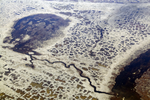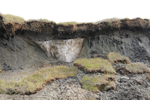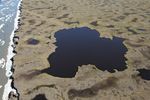Labs portal1: Difference between revisions
From CSDMS
No edit summary |
No edit summary |
||
| Line 3: | Line 3: | ||
<center>{{#formlink:form=Labs|link type=button|link text=Add a lab}}</center> | <center>{{#formlink:form=Labs|link type=button|link text=Add a lab}}</center> | ||
{{Jobs_header}} | <!--{{Jobs_header}}--> | ||
{{#ask: [[Category:Labs]] | {{#ask: [[Category:Labs]] | ||
| ?Labtitle | | ?Labtitle | ||
Revision as of 09:28, 23 March 2020
CSDMS related Labs
Permafrost Modeling - where does permafrost occur?
Module 1 of 4 of the series Permafrost.
What is permafrost and how do you make a first-order prediction about permafrost occurrence. This is lesson 1 in a mini-course on permafrost, this lab uses the Air Frost Number and annual temperature data to predict permafrost occurrence.
Module 1 of 4 of the series Permafrost.
What is permafrost and how do you make a first-order prediction about permafrost occurrence. This is lesson 1 in a mini-course on permafrost, this lab uses the Air Frost Number and annual temperature data to predict permafrost occurrence.
Duration:
{{{8}}}
Model used:
Frost Model
{{{8}}}
Model used:
Frost Model
Permafrost Modeling - the Active Layer
Module 2 of 4 of the series Permafrost.
Explore what is active layer depth and the effects of snow and soil water content on permafrost. This is lesson 2 in a mini-course on permafrost. It employs a 1D configuration of the Kudryavtsev model.
Module 2 of 4 of the series Permafrost.
Explore what is active layer depth and the effects of snow and soil water content on permafrost. This is lesson 2 in a mini-course on permafrost. It employs a 1D configuration of the Kudryavtsev model.
Duration:
{{{8}}}
Model used:
Kudryavtsev Model
{{{8}}}
Model used:
Kudryavtsev Model
Permafrost Modeling - making maps from gridded climate data
Module 3 of 4 of the series Permafrost.
Using the Frost number code and grids of climate input data, one can make predictions of permafrost occurrence over the last century in Alaska. This is lesson 3 in a mini-course on permafrost.
Module 3 of 4 of the series Permafrost.
Using the Frost number code and grids of climate input data, one can make predictions of permafrost occurrence over the last century in Alaska. This is lesson 3 in a mini-course on permafrost.
Duration:
{{{8}}}
Model used:
Frost Model
{{{8}}}
Model used:
Frost Model
Permafrost Modeling - looking at future permafrost with climate models
Module 4 of 4 of the series Permafrost.
Using the Frost number code and grids of climate model input data (CMIP5), allows you to map predictions of permafrost occurrence. This is lesson 4 in a mini-course on permafrost.
Module 4 of 4 of the series Permafrost.
Using the Frost number code and grids of climate model input data (CMIP5), allows you to map predictions of permafrost occurrence. This is lesson 4 in a mini-course on permafrost.
Duration:
{{{8}}}
Model used:
Frost Model
{{{8}}}
Model used:
Frost Model




